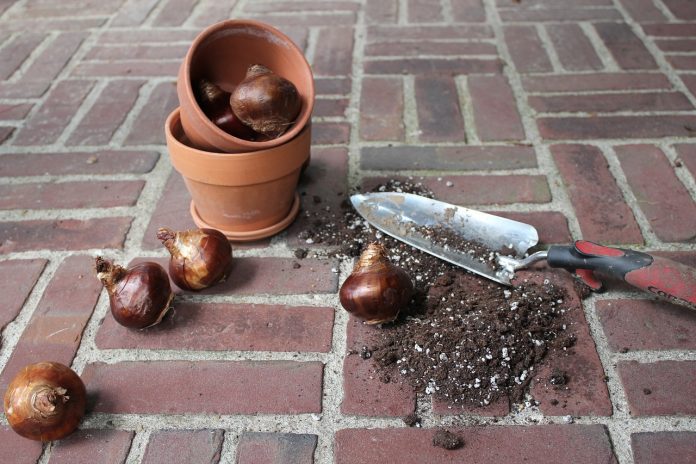Planting bulbs in the fall is an easy way to round out your garden and jump-start spring gardening season. If you plan carefully enough you can ensure blooms from March to June.
Bulbs to plant in the fall
Only hardy perennial bulbs that need to overwinter in order to bloom in the spring should be planted in the fall.
Try these popular bulbs:
- Crocus: 2 to 4 inches deep, 3 to 5 inches apart
- Hyacinths: 4 to 6 inches deep, 6 to 8 inches apart
- Daffodils: 8 inches deep, 6 inches apart
- Tulips: 4 to 6 inches deep, 4 to 6 inches apart
- Snowdrop: 3 inches deep, 3 inches apart
- Iris: 4-5 inches deep, 6 bulbs per square foot
Tips for selecting healthy bulbs
- Choose the largest bulbs for the best flower production.
- Select bulbs that are free of disease and decay.
- Pick bulbs individually to ensure higher quality.
- Pay attention to the bloom time of the varieties you select and try to choose a variety for a long-lasting bloom period in your garden.
- Choose bulbs that are firm and have good color.
When and where to purchase bulbs
Bulbs need to be planted before the first frost with enough time to establish roots before the soil freezes. The ideal time to plant spans from mid September to October.
Incidentally, early September offers the best selection and variety for purchasing bulbs. You can buy bulbs at local garden centers or order them through catalogs.
Once you’ve purchased your bulbs, store them in a cool dry environment until you’re ready to plant them.
Preparing your garden
Site selection and preparation are key for many years of successful growth and flower production. When choosing a location and preparing a spot in your garden or a new site to plant bulbs, consider the following:
- Bulbs prefer full sun. Choose a location with at least six hours of sunlight. You may consider planting spring bulbs under deciduous trees takes advantage of the sunlight before the trees leaf out.
- Soil drainage is crucial. Excellent soil drainage is important for root development and bulb rot prevention during the dormant season.
- Check the soil pH. Bulbs grow best in soil with a pH between 6 and 7.
- Mix in compost. Fresh compost helps stimulate root growth to help establish your new bulbs.
Planting bulbs
- Plant bulbs, tip side up at the appropriate depth for each individual bulb. Generally, small bulbs are planted 1-2”, medium 2-4”, and large 4-6” deep.
- Cover with a couple inches of displaced soil. If you’ve noticed critters stealing your bulbs in the past, you can use fine mesh clothe to cover your bulb before replacing dirt.
- Water thoroughly when finished planting.
- If you amend soil with compost or fertilizer when you prepare your garden bed you do not need to apply additional fertilizer.
- After ground freezes apply a 3-4” layer of mulch to control soil temperature and protect your bulbs from damage during the winter.
- In the spring, apply a slow-release single application of fertilizer.
- Some bulbs multiply rapidly and will need to be divided each year. You can easily accomplish this by digging them up in mid-summer after the foliage has died, or in early fall. Save the larger healthy bulbs and get rid of any damaged bulbs.












